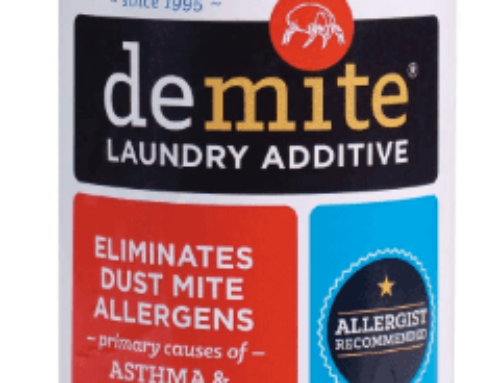Table of Contents
Dust mites are commonly found in most households. But if you started developing itchy skin, should you push the blame to the dust mites growing in your home?
Do Dust Mites Bite?
There’s always a misconception that dust mites bite humans and cause itchy skin. The fact is, dust mites don’t bite on humans. You won’t have hundreds of these unseen pests feasting on your skin when you fall asleep.
Unlike bed bugs, dust mites are pretty harmless when it comes to blood-sucking or tearing into flesh. However, the problems caused by dust mites can be more serious and on a larger scale.
Dust mites feast on dead skin cells shed by humans, and that makes them pretty tame. The real culprit that triggers dust mite allergies is the protein produced by the pest. The protein is the allergen that causes our body to react by producing histamine.
Can Dust Mites Cause Itchy Skin?

When our body senses foreign particles like dust mites allergen, various symptoms pop up as the body tries to neutralize the allergen. Common dust mites allergy symptoms are sneezing, runny nose, teary eyes, and nasal inflammation.
However, in some cases, people to suffer from itchy skin. Such incidents are not common, but they are not unreported either. Some people will develop itchy and red patches on their skin when exposed to dust mites allergen.
Along with other dust mites allergy symptoms, having red and itchy skin can wreak havoc on your daily life. My son, who suffered from dust mites allergies was spared from having itchy skin to compound on the other complications that arise.
What Should You Do When You Suffer From Itchy Skin?
If you start developing itchy rashes, you’ll want to consult a medical professional. Book an appointment with your doctor and have the cause of the itchiness verified.
When you suffer from dust mites allergies, you’ll often exhibit other more common symptoms. Your doctor will diagnose the symptoms and in some cases, a skin prick test is performed. In the test, the doctor will prick your skin with a small amount of dust mite allergen to positively validate the cause of your allergy.
Depending on your symptoms, your doctor may prescribe certain types of medication. For itchy skin, anti-histamine is often used. The symptoms, including itchy skin, usually subside after taking the medication for a few days or a week.
Preventing Dust Mites Growth In Your Home
Getting treatment is only part of the solution of dust mites allergy. The symptoms may have gone away after taking medications, but if the root cause a.k.a. dust mites are still growing in your home, it’ll be a matter of time before the symptoms rear their ugly heads again.
You’ll want to stop dust mites’ growth in your home. Theoretically, you can’t eliminate every single dust mite but you can reduce the numbers drastically to prevent triggering the allergy symptoms.
Here are some useful tips that I’ve personally practiced.
1. Clean Beddings Regularly
Your mattress can be a hotspot for dust mites’ growth. Millions of dead skin cells often accumulate in the mattress and become an almost unlimited food source for dust mites. Cleaning your beddings is mandatory to reduce dust mites in your home.
Start with washing mattress covers, pillowcases and other fabrics in hot temperature. Dust mites are killed when they are exposed to 55°C or above. If you have a dryer tumbler, that will do the trick.
Also, remember that a good number of dust mites may be in the mattress. A UV vacuum cleaner will be handy as it uses, heat, UV and a motorized mechanism to shake dust mites to the surface and destroy them.
2. Clean The Carpets
Carpets are a perfect trap for dust and skin flakes, which eventually become a breeding spot for dust mites. I’ll suggest using a carpet cleaner with deep cleaning capability to destroy the dust mites hidden in the carpet.
Also, sprinkling anti-dust mites powder will help in killing the dust mites that are growing deep in the carpet.
3. Dehumidify Your Home
Dust mites thrive in a humid environment. If you have a relative humidity of 70%-80% in your home, you may have a rampantly-growing colony of dust mites. An overtly-humid environment that is great for dust mites isn’t conducive to human health.
Lowering the humidity in your home, whether by improving the ventilation or installing a dehumidifier, helps in minimizing dust mites’ growth. The ideal humidity that you’ll want to aim for is 50%, a sweet spot for humans.
Final Thoughts
Having itchy skin from dust mites allergies is rare but isn’t unheard of. You’ll want to take dust mites allergies seriously, as the symptoms can aggravate quickly if you don’t seek treatment.
Related:
- Can Dust Mites Cause Asthma? (Or Worse?)
- Does Hydrogen Peroxide Kill Dust Mites?
- Best Bedding For Dust Mites Allergies
- Does Heat Kill Dust Mites?
- Is There A Dust Mite Test Kit For Home Use?




Leave A Comment